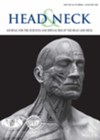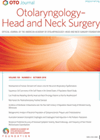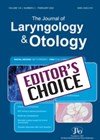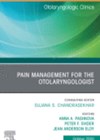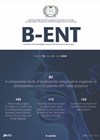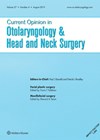
Journal Reviews
Core biopsies are good enough for lymphomas
This paper, from the South of England, has reviewed ultrasound-guided core needle biopsies over a six-year period investigating the use of the detection of head and neck lymphomas. There were 367 samples included from 226 patients; 215 of the 226...
Reducing the risk of Frey’s syndrome after parotidectomy – which methods are best?
Gustatory sweating or Frey’s syndrome is a well-recognised complication of parotid surgery. The reported incidence is highly variable, from 4% to 96%, with around 30% of patients reporting symptoms. A number of intraoperative techniques can be used to reduce the...
Structures determining T4a, T4b
This paper for tertiary cancer centre in India attempted to determine whether patients with T4b oral cancers involving the 'masticator space' should be treated with survival intent comparable to T4a cancers. Over a 7-year period, 30 patients with T4b cancers...
Narrow band imaging in the management of carcinoma of unknown primary
This was a retrospective study to assess the utility of narrow band imaging (NBI) in the detection of a primary site in carcinoma of unknown primary (CUP). Patients with CUP who underwent transoral robotic surgery (TORS) and preoperative imaging with...
Modifying two-week wait protocol for suspected head and neck cancer patients during COVID-19
As healthcare workers, we are committed to ensuring that our patients continue to receive the optimum care that we are set up to deliver. However, the last year has shown that we need to be mindful of balancing this with...
Preventing major postoperative haemorrhage following TORS
Transoral robotic surgery (TORS) has become an increasingly utilised treatment modality in the management of oropharyngeal squamous cell carcinoma (OPSCC). Postoperative haemorrhage, although uncommon, is a significant complication. To ameliorate this risk, transcervical ligation of branches of the external carotid...
Pain control for patients with chronic pain following surgery
There is an increasing number of patients with a background of chronic pain presenting to the otolaryngologist. Patients with chronic pain require extra consideration in postoperative pain control due to risk of tolerance and dependence. This article summarises postoperative management...
COVID-19 tracheostomies
This is a review of tracheostomies completed by an OMFS Unit in London from 10 March to 18 May 2020. A total of 176 COVID-19 patients were admitted to intensive care, 72 of which required tracheostomy due to prolonged respiratory...
TMJ arthrocentesis
This is a paper from Brazil where they attempted to clarify the volume required for an arthrocentesis to the temporomandibular joint. Nineteen cadavers had methylene blue injected into the upper joint space. Conventional arthrocentesis was then conducted with 300ml of...
PET-CT for malignant nasopharyngeal lesions
This retrospective Turkish review of 92 patients aimed to determine the ability of fluorine 18-fluorodeoxyglucose (FDG) maximum standardised uptake value (SUVmax) on positron emission tomography/computerised tomography (PET/CT) to differentiate benign processes and malignant nasopharyngeal lesions. The authors retrospectively reviewed the...
British Skull Base Society Clinical Consensus Document on Management of Head and Neck Paragangliomas (HNPGLs)
All forms of HNPGLs should be managed by a multidisciplinary team (MDT) of core members from skull base otolaryngology, head and neck surgery, clinical genetics, oncology, endocrinology, vascular surgery, radiology and pathology. Extended members include neurosurgery, endocrine surgery, nuclear medicine,...
Functional considerations in reconstruction after laryngectomy
With a plethora of different reconstructive options and techniques available after laryngectomy, it can be difficult to clearly see which give the lowest complication rates and best functional outcomes. This article aims to summarise the current evidence in swallowing and...


